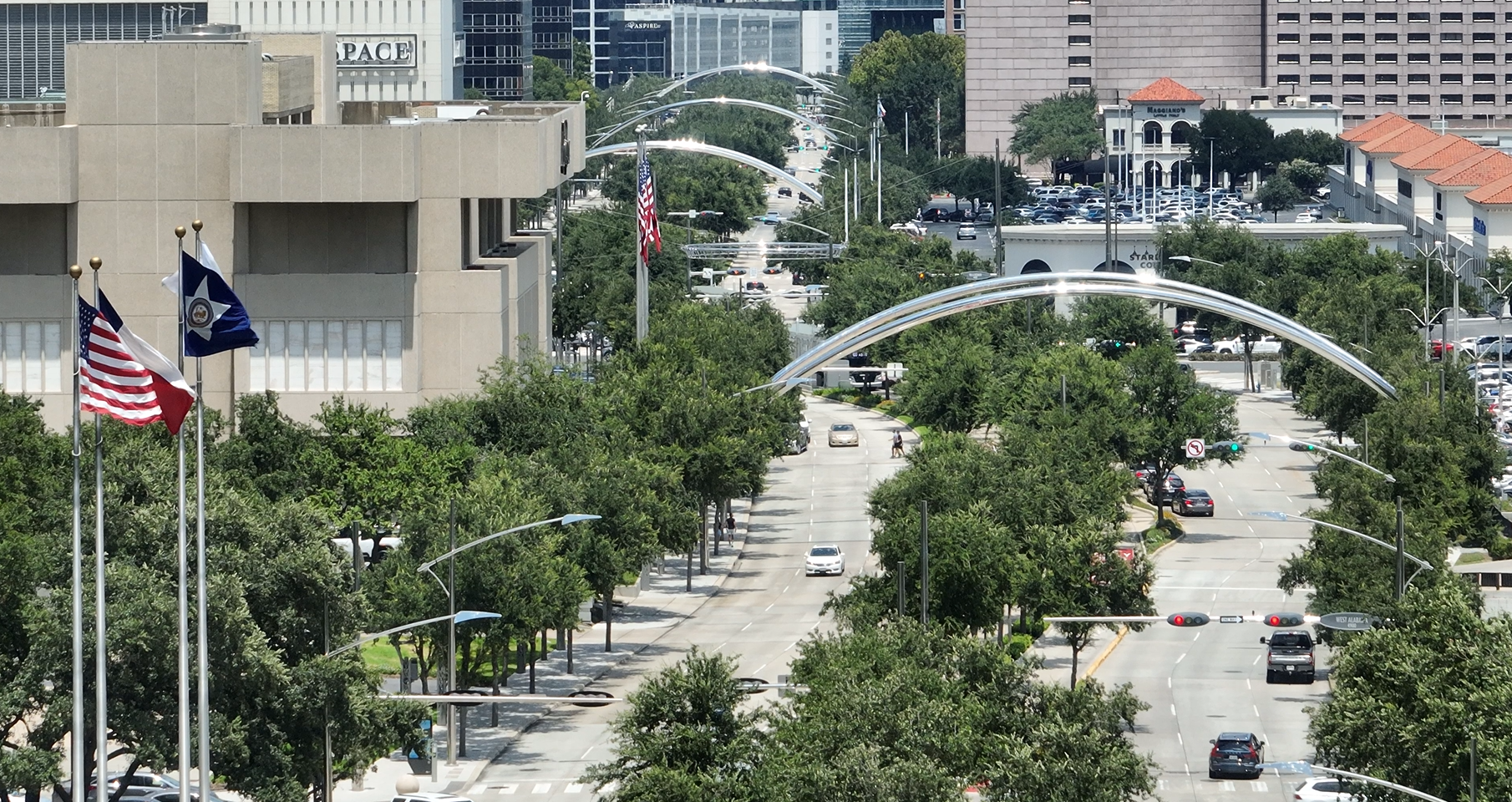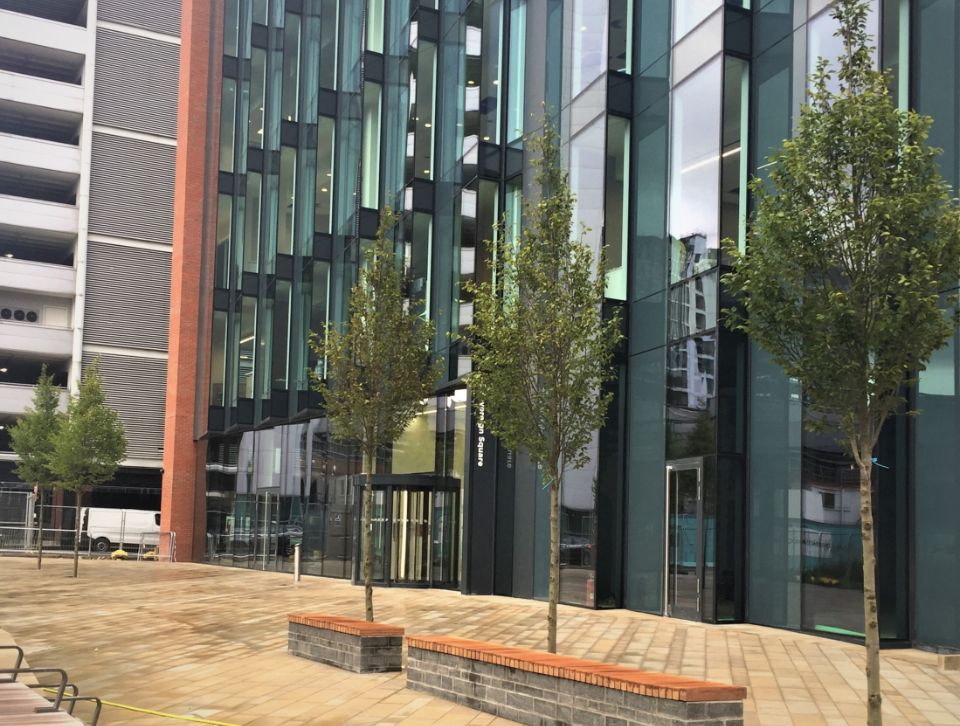Post Oak Boulevard installed Silva Cells under the new widened sidewalks, ensuring healthy growth and longevity for Live Oak trees
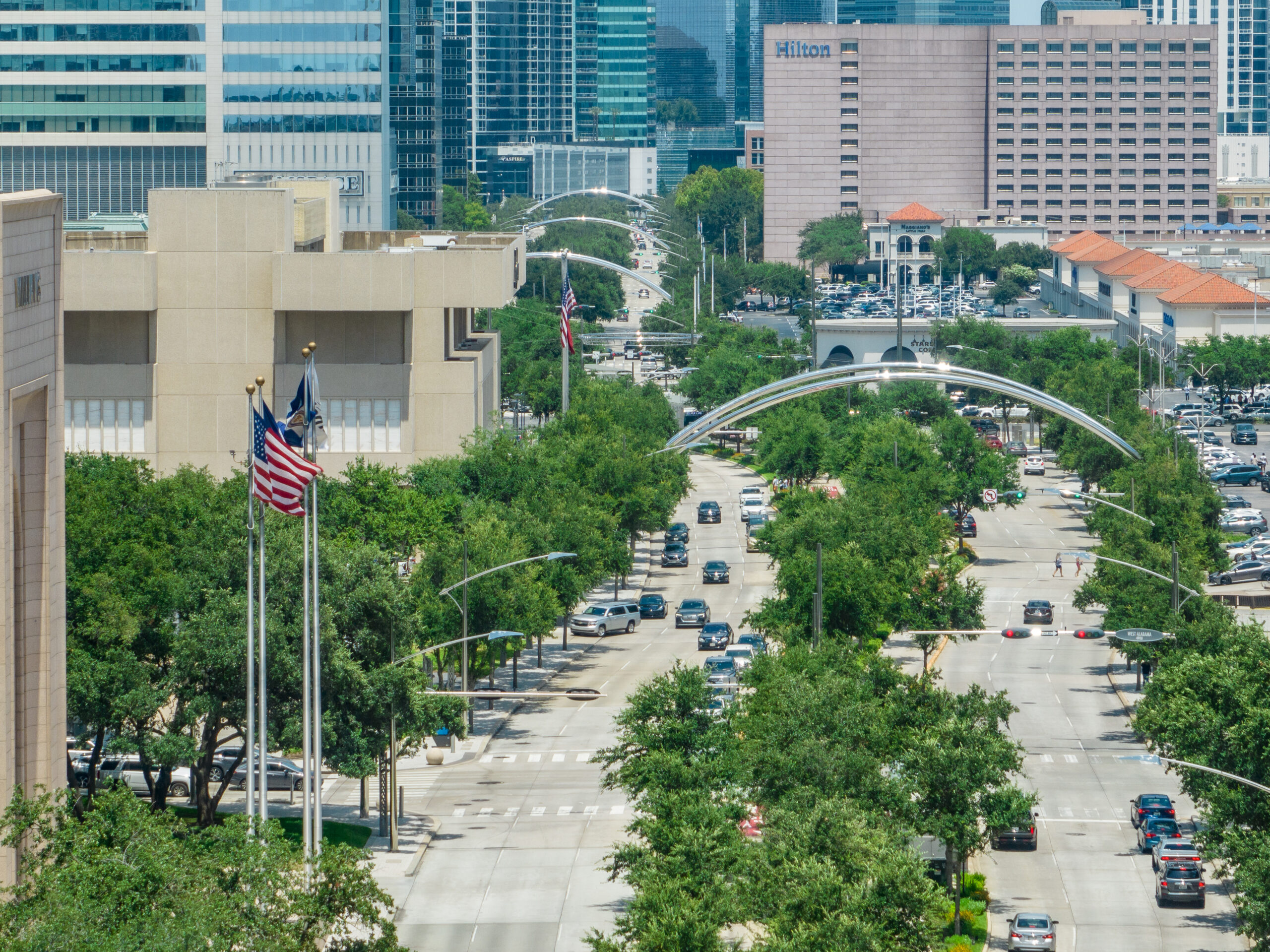
One of the nation’s largest business districts, Uptown Houston is evolving from an office-park landscape into a mixed-use residential destination: an area in which a contingent of new young residents are looking to work, live, and socialize all in the same community. In recognition of this transformation, the city in the mid-2010s sought to upgrade the neighborhood’s main traffic artery — Post Oak Boulevard — with public-transit and pedestrian-friendly features, including a shaded center bus lane and widened sidewalks. Almost a thousand custom-grown Live Oak trees now line the roadway from IH-610 to Richmond Avenue — hundreds of them planted along the new sidewalks in Silva Cells, which in many places serve as a bridge to adjacent green space and thus additional uncompacted soil volume for continued tree growth.
Number of Silva Cells: 1,608 (2x)
Number of Trees: 300+
Type of Project: Streetscape
Project Designer: Design Workshop
Project Contractor: Environmental Design
Installation Date of Silva Cells: Fall 2016
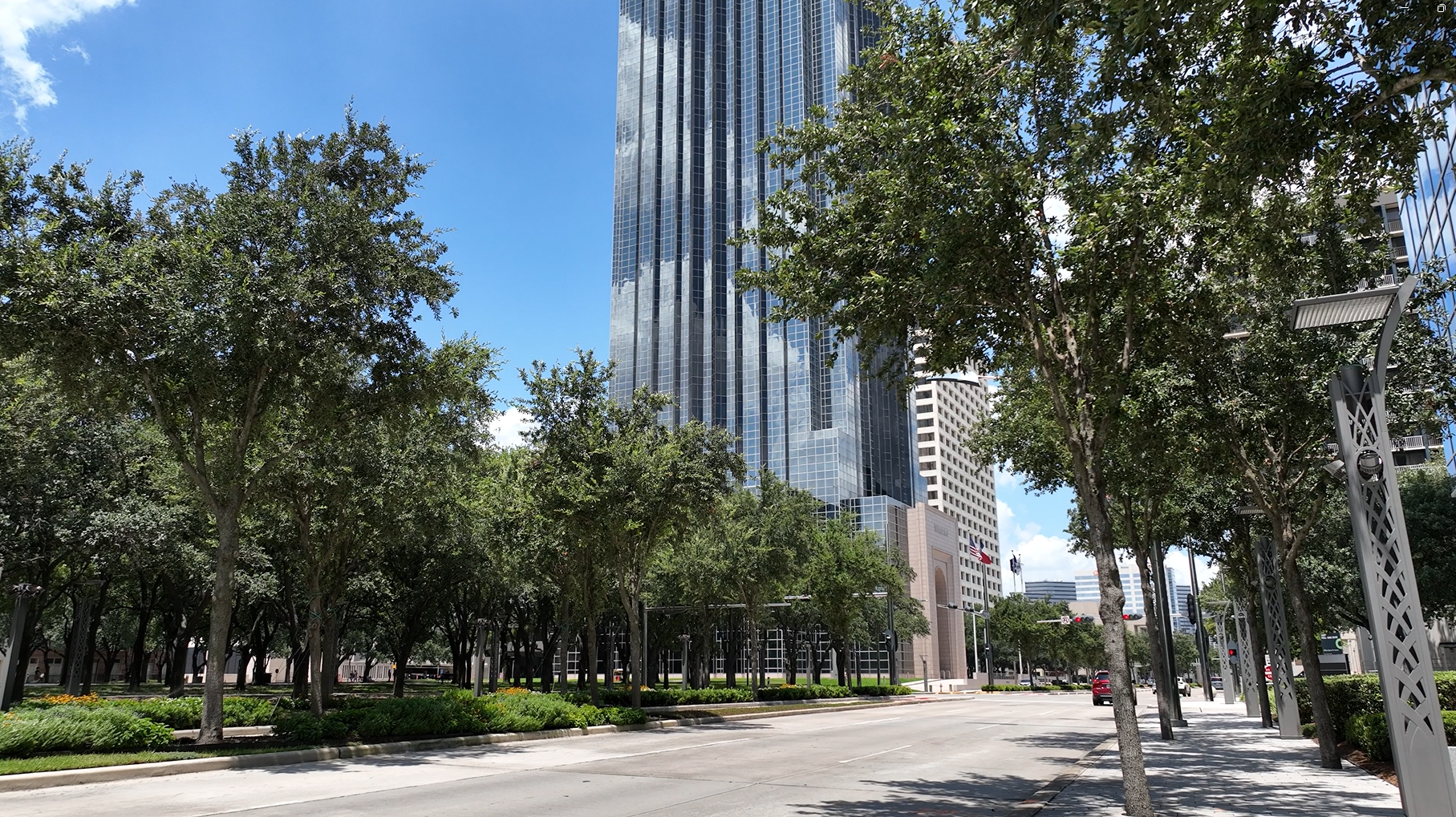
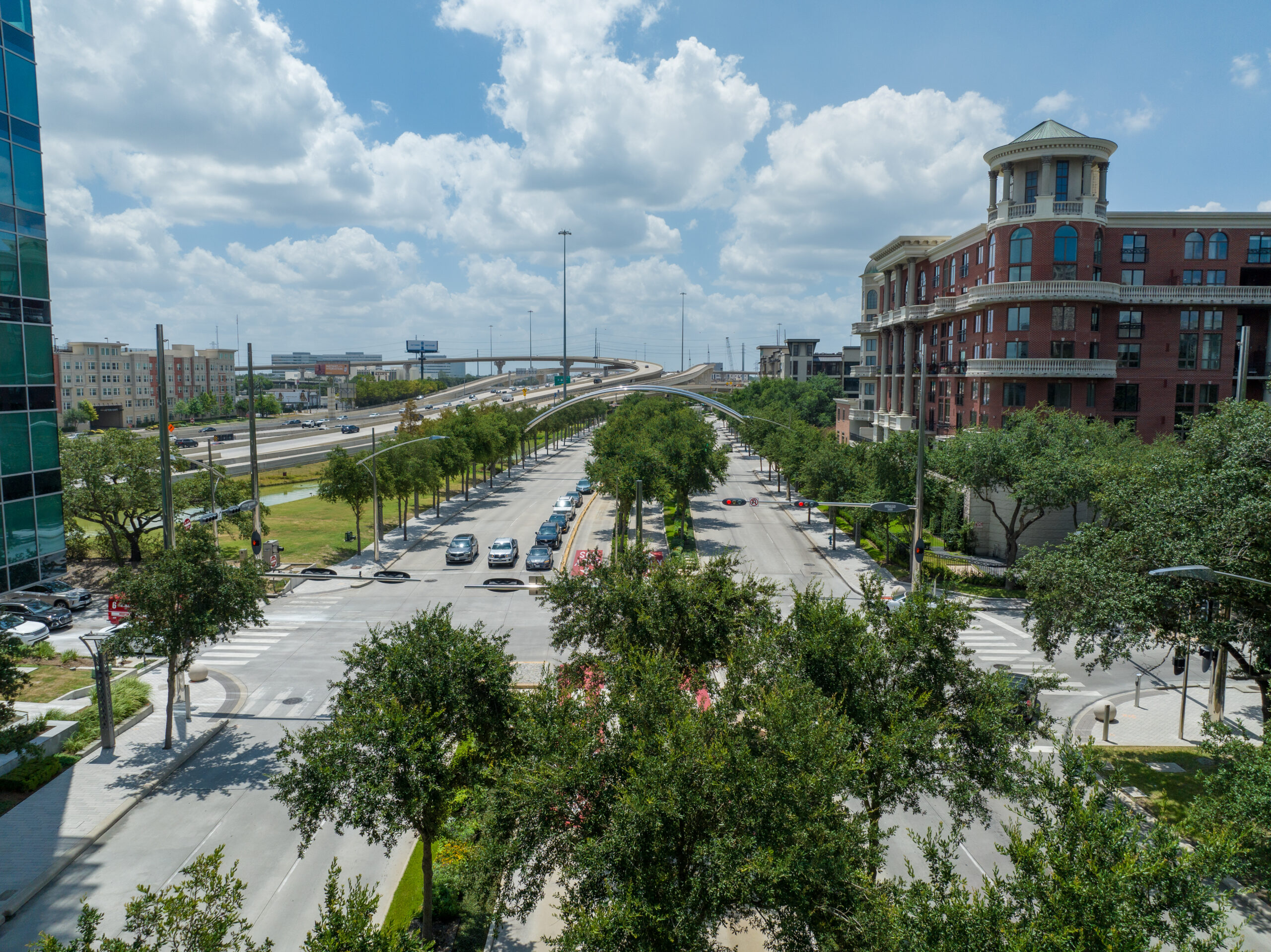
As with many urban and suburban traffic arteries, Post Oak Boulevard in Houston’s Uptown neighborhood — built in the 1940s and expanded in the 1960s — was designed with automobile efficiency as its top priority: moving cars in and out as quickly as possible. As the district expanded (it currently ranks as the 15th largest business sector in the United States), it has evolved from a commercial-only area to a residential destination: New, young residents moved in and the car-centric road strategy was becoming increasingly obsolete. In the mid-2010s, a project was initiated to make Post Oak Boulevard more welcoming for non-automobile traffic, including expanded pedestrian walkways and an express bus lane.
The landscape architecture element of the redevelopment project was led by Design Workshop, who envisioned Post Oak Boulevard having “signature placemaking elements” including wider sidewalks and pedestrian-level lighting. As noted on Design Workshop’s website, the purpose of these bold moves was to “provide a strong sense of neighborhood identity and transit connection to the larger Houston area. This Grand Boulevard ushers in the next chapter of Uptown, Houston as a complete community.”
One of the most important features of the project from the very beginning was the trees: Nearly 1,000 Live Oak trees now line the streetscape, including along the center bus lane and providing a nearly continuous shade canopy for pedestrians on the new 12-foot-wide sidewalks. The trees, purchased from a Florida tree farm and delivered to Environmental Designs in Texas, were grown in custom 400-gallon wooden crates until they were mature enough to be transplanted to the streetscape.
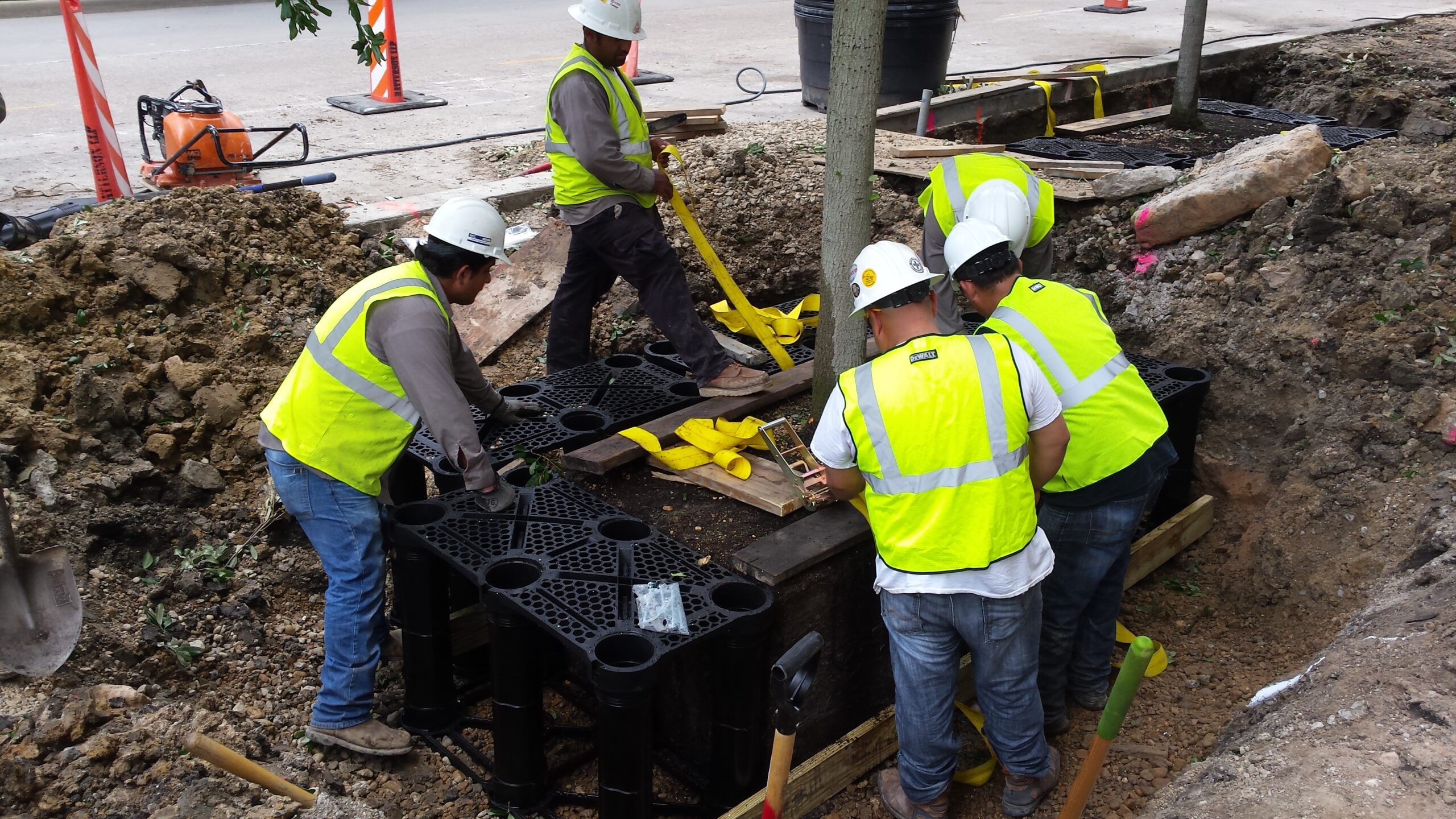
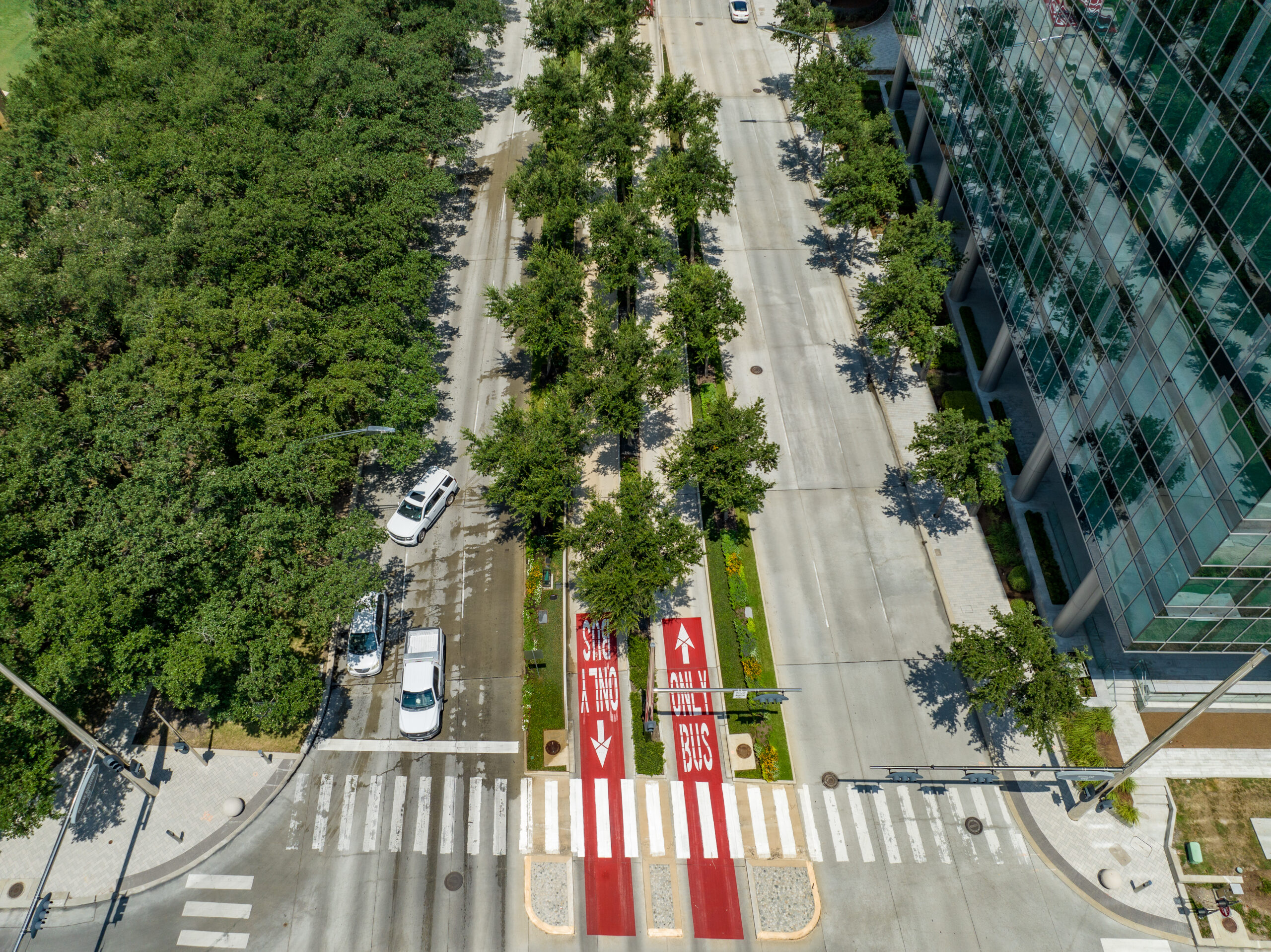
Hundreds of these trees were planted along the sidewalk where they are accessing lightly compacted soil in the Silva Cell system (installed in the fall of 2016) for continued health and vitality. Part of a colonnade of seven rows of trees, these plantings are in many cases accessing additional soil volume from adjacent green spaces — a root bridge made possible by the use of the Silva Cells.
Sustainability was likewise a priority of the redevelopment. Terrain Studio, who assisted in the initial conceptual design and planning, identifies a number of environmentally friendly outcomes of the Post Oak Boulevard project, including mitigating the heat island effect, reducing air pollution, and using trees and porous green space to slow and absorb rainwater.
The new street is the pride of its community. John Breeding, Uptown Houston’s district president, says, “Many of our city’s most beloved and finest architectural achievements, restaurants, residences, and retailers call Uptown home, and we [now] have a magnificent, walkable boulevard to match.”
-ASLA Texas, Merit Award
-ASLA Colorado, Honor Award for Planning and Analysis
For other DeepRoot projects in Texas, check out our case studies here, here, and here.
